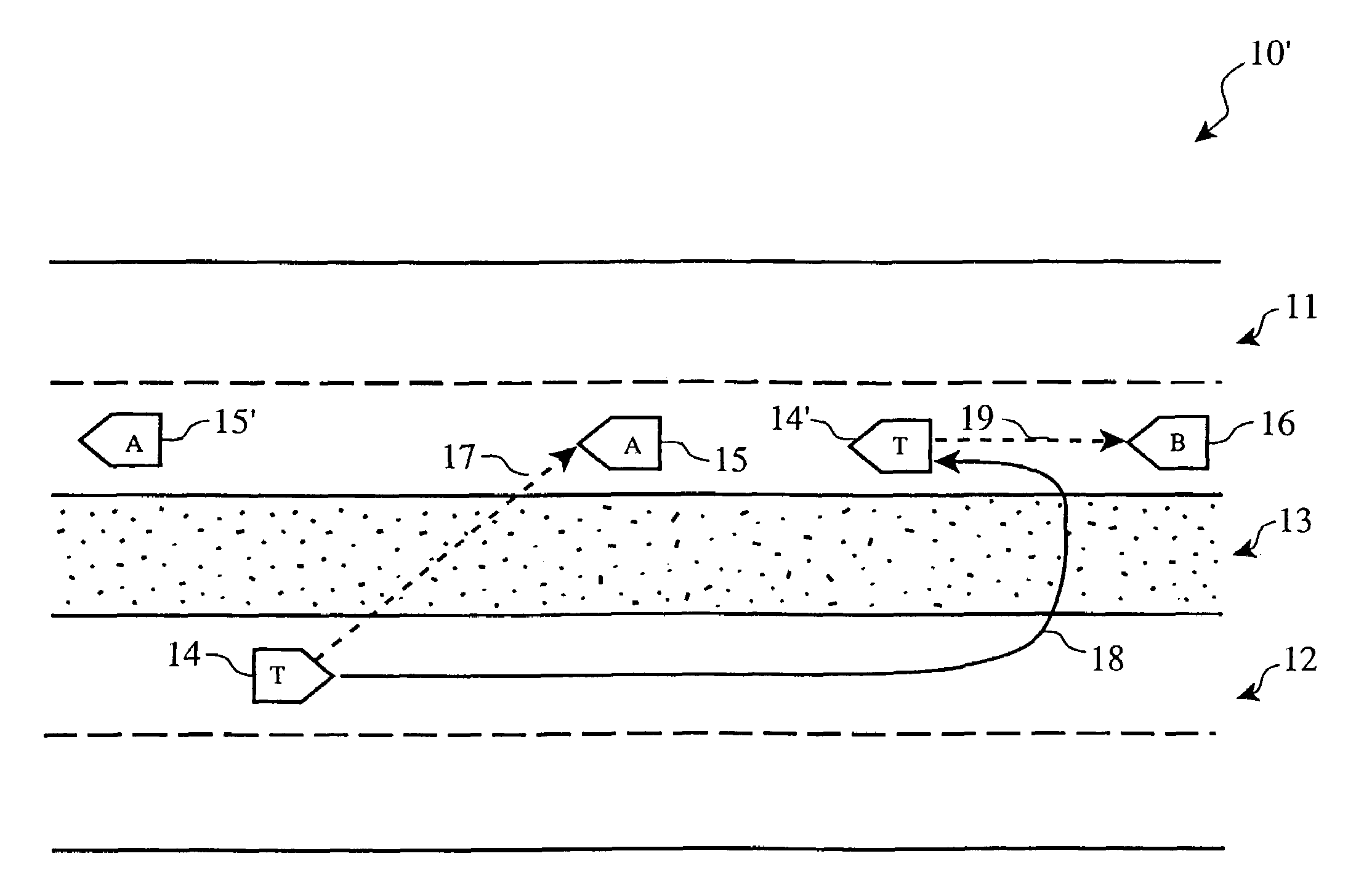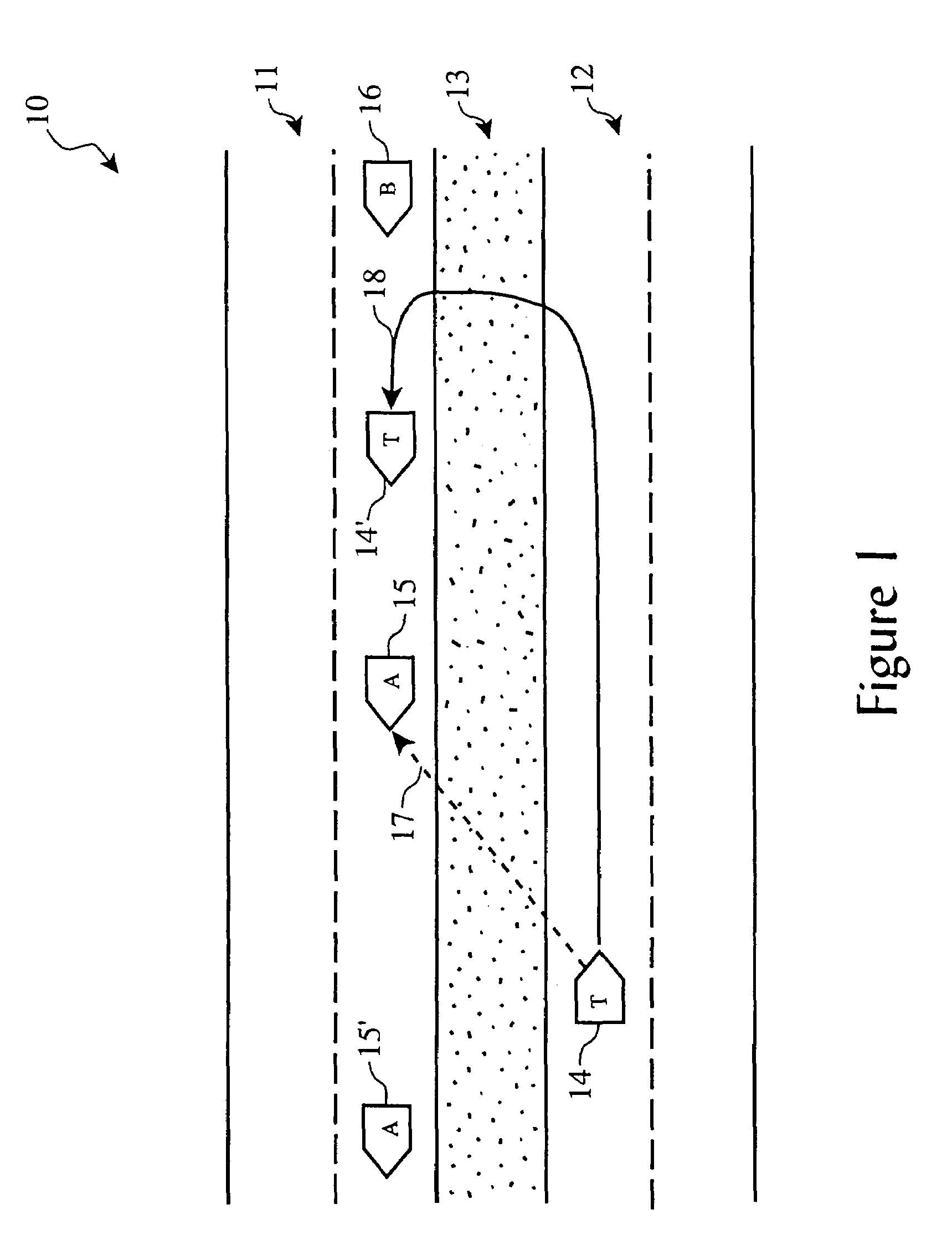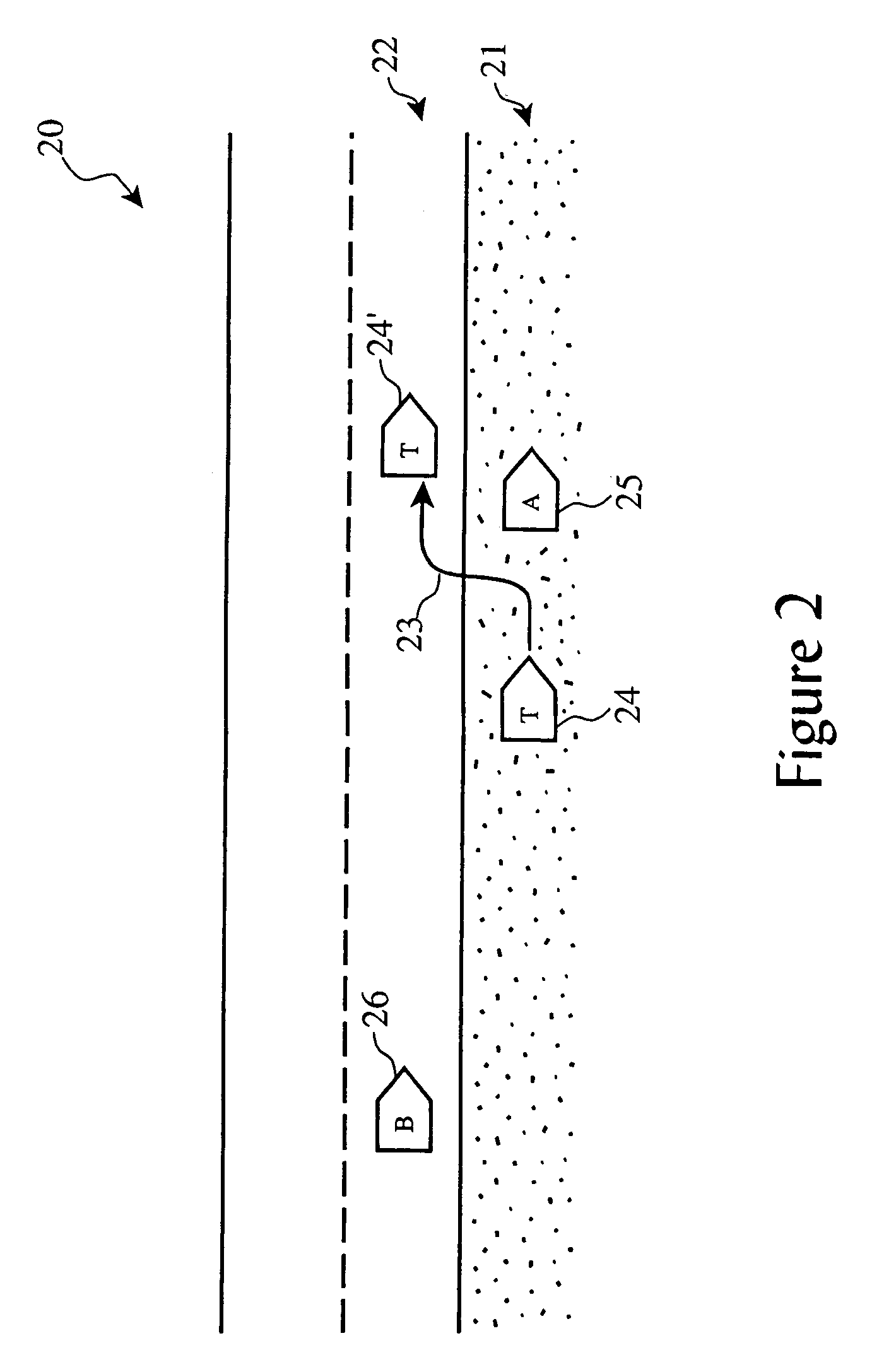Traffic alert police radar
a technology of traffic alert and radar, applied in the direction of process and machine control, using reradiation, instruments, etc., can solve the problems of law enforcement vehicles not being the only types of vehicles, types of vehicles, and exposed to hazardous traffic conditions, so as to reduce training and learning requirements, enhance safety for law enforcement officers, and avoid additional equipment weight or power consumption
- Summary
- Abstract
- Description
- Claims
- Application Information
AI Technical Summary
Benefits of technology
Problems solved by technology
Method used
Image
Examples
Embodiment Construction
[0038]The present invention is preferably realized as a functional enhancement to a police Doppler Direction Sensing Radar. The present invention may be embodied as software, hardware, or a combination of software and hardware. As such, we first present information regarding such DDSR units. Additionally, we will provide certain examples of usage of the present invention with respect to law enforcement vehicles, which we will collectively refer to as “trooper vehicles”. However, usage of the present invention is not limited to law enforcement vehicles, but also includes all types of vehicles which may benefit from improved safety during operation such as other emergency vehicles and non-emergency vehicles.
Enhanced Safety Scenarios using Our Traffic Alert System
[0039]Turning to FIG. 3 and revisiting the dangerous traffic scenario (10) discussed in conjunction with FIG. 1, our enhanced DDSR with Traffic Alert function uses the rear looking radar capabilities of the DDSR to help detect...
PUM
 Login to View More
Login to View More Abstract
Description
Claims
Application Information
 Login to View More
Login to View More - R&D
- Intellectual Property
- Life Sciences
- Materials
- Tech Scout
- Unparalleled Data Quality
- Higher Quality Content
- 60% Fewer Hallucinations
Browse by: Latest US Patents, China's latest patents, Technical Efficacy Thesaurus, Application Domain, Technology Topic, Popular Technical Reports.
© 2025 PatSnap. All rights reserved.Legal|Privacy policy|Modern Slavery Act Transparency Statement|Sitemap|About US| Contact US: help@patsnap.com



